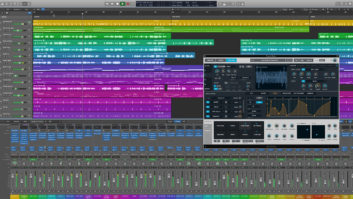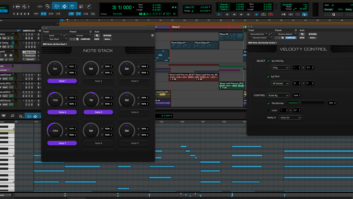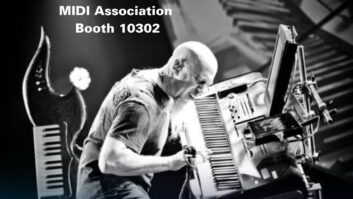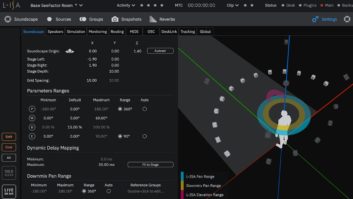
In the May 2018 Software Tech column (“MIDI-CI Makes Its Debut”), we covered MIDI-CI (MIDI Capability Inquiry), which had just been ratified by the MIDI Manufacturers Association. Now, additional aspects of the MIDI 2.0 spec have fallen into place, and the first pieces of gear with elements of MIDI 2.0 are working their way out of R&D and into the real world.
The most fundamental MIDI 2.0 difference is that it’s now fully bidirectional; think of MIDI “conversations” as changing from a monologue to a dialogue. Bidirectionality is at the heart of MIDI-CI, and the implications are such that we really don’t know what it will bring in the future, any more than we knew in 1983 that MIDI would control the fountains at the Bellagio in Las Vegas, Disney parades, and the Broadway production of Miss Saigon (or end up in smartphones, for that matter).
MIDI-CI could have a major influence on protocols like the NKS specification (www.tinyurl.com/ssb5lju). Currently, companies use NKS to map the hardware controls in Native Instruments’ keyboard control surfaces to software parameters. As MIDI-CI becomes commonplace, the control surface could just ask a soft synth about what parameters it has, and match something like a dedicated filter cutoff hardware control to the appropriate parameter. This might even make “MIDI learn” an endangered species, because a parameter could send its own request about what it wants to learn. Bidirectional communication is also what makes backward-compatibility possible; if a MIDI 2.0 device queries a MIDI 1.0 device and doesn’t get a response, it can fall back to communicating via MIDI 1.0.
Interactivity could facilitate more flexible ways of dealing with improvisation. For example, some acts use a DAW to sequence live performances via program changes and mix automation. Perhaps a performer could trigger a command like “loop this section again” simply by tapping a footswitch for a program change that’s already selected, then double-tapping it to resume the existing sequence.
The original MIDI spec was tied tightly to hardware—that ubiquitous 5-pin DIN connector, with a separate input and output. Modern transports like USB, AVB, TSN, etc. are inherently bidirectional, and MIDI 2.0 can run over any kind of network, so MIDI 2.0 will be able to deal with other bidirectional networking protocols that may appear in the future.
MIDI 2.0 additionally offers the higher resolution for which people have been clamoring since the spec was introduced, and in the process, it has reimagined the role of controllers. The cumbersome, compound RPN and NRPN controller messages have been replaced by single controller messages that are as easy to use as MIDI 1.0’s continuous controller messages. And you won’t run out of controllers—the number of registered and assignable controllers has been expanded to 16,384 each, and that even includes the kind of per-note controllers needed for nuanced, musically expressive playing. (Steinberg’s Note Expression feature has already provided the “proof of concept” for why per-note expression is useful.) Controllers are now capable of 32-bit resolution—a major improvement compared to 128 steps—which means digital controls will have a smoother, more analog feel. Even velocity response has been upgraded, from 8 to 16 bits, and there’s space reserved for hundreds of new MIDI messages.
Enhanced resolution applies to timing as well; major timing improvements in timestamping and jitter reduction are part of MIDI 2.0. Even better, some of these changes can apply to MIDI 1.0 devices. It’s even possible retrofit some MIDI 1.0 devices for compatibility with selected aspects of the MIDI 2.0 specification.
Many of MIDI 2.0’s advantages are obvious now, but as with MIDI 1.0, it’s impossible to anticipate the ways this technology will be applied in the future. Just like MIDI 1.0, a lot of thought and development went into creating a toolset designed to last. And again, the specification is a cooperative effort among all major manufacturers, with the MMA and AMEI (the Japanese equivalent) working together to maintain compatibility, while enhancing the specification in an orderly, premeditated way. Furthermore, www.midi.org will continue as a free, educational site that serves as the main dissemination point for information about all aspects of MIDI.
It indeed looks like MIDI’s next generation is gearing up for the long haul, and I wouldn’t be surprised if MIDI 2.0 duplicates MIDI 1.0’s staying power … which has kept the spec viable for 37 years.
Check out author/musician Craig Anderton’s craiganderton.org educational site, craiganderton.com digital storefront, and stream his music at www.youtube.com/thecraiganderton.







